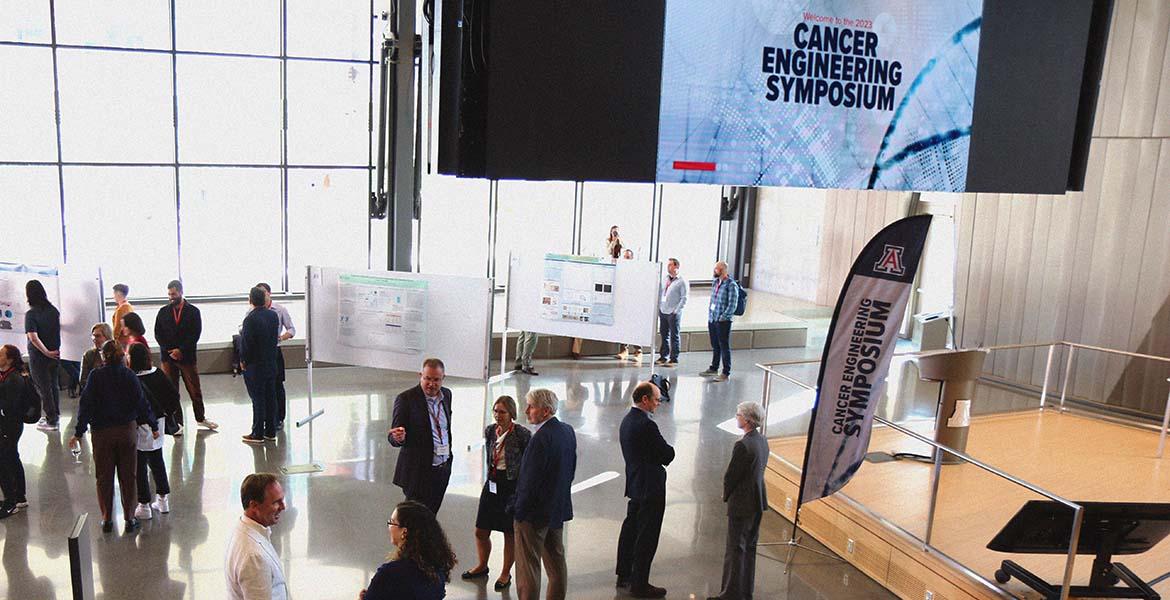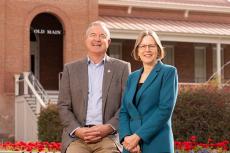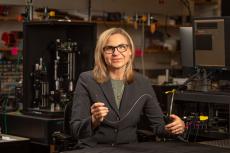Symposium Lends to Launch of UA Cancer Engineering Initiative
“Our initiative is team science at its very best.”
With these words, Joann Sweasy, Nancy C. and Craig M. Berge Endowed Chair for the Director of the Cancer Center, began the University of Arizona’s inaugural Cancer Engineering Symposium on March 24.
The event, co-hosted by the College of Engineering and the Cancer Center, brought together internationally recognized researchers for the launch of the UA Cancer Engineering Initiative.
Through the state of Arizona’s New Economy Initiative, the UA was awarded $10.8 million for interdisciplinary research to advance understanding of cancer prevention, diagnosis and treatment. Sweasy and David W. Hahn, Craig M. Berge Dean of the College of Engineering, initially shared a vision for the program and gained strong support from leaders across the university.
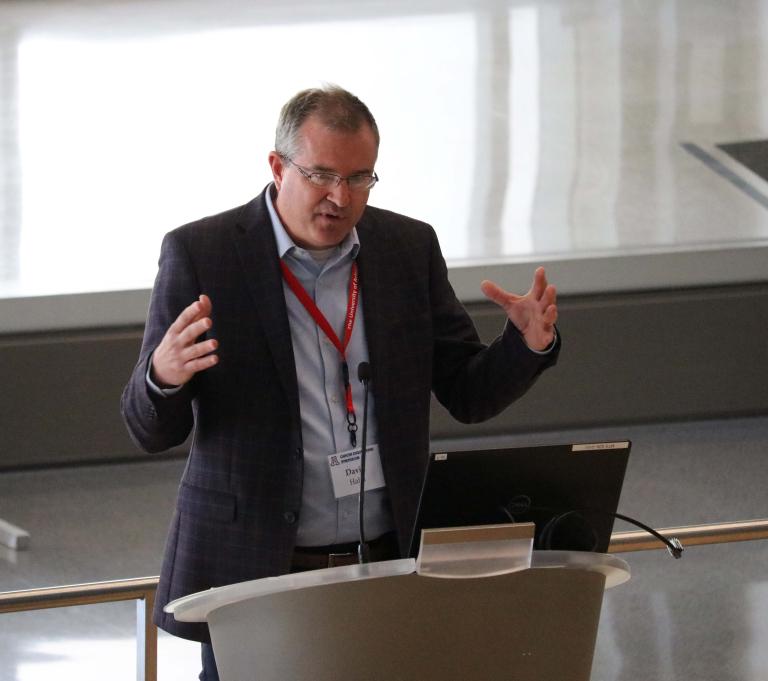
Hahn also addressed the group of cancer biologists and engineers.
“When I came to Arizona as dean in 2019, I set a high priority to build a cancer engineering program here in collaboration with our colleagues,” he said. “Now – thanks to excellent partnerships, expertise and timing – we’re seeing that this initiative has huge potential.”
Hahn first worked on cancer engineering at the University of Florida, where he had a 20-year career and chaired the Department of Mechanical and Aerospace Engineering. He collaborated with Greg Sawyer, the symposium’s keynote speaker. Sawyer was one of seven experts who traveled from out of state to speak.
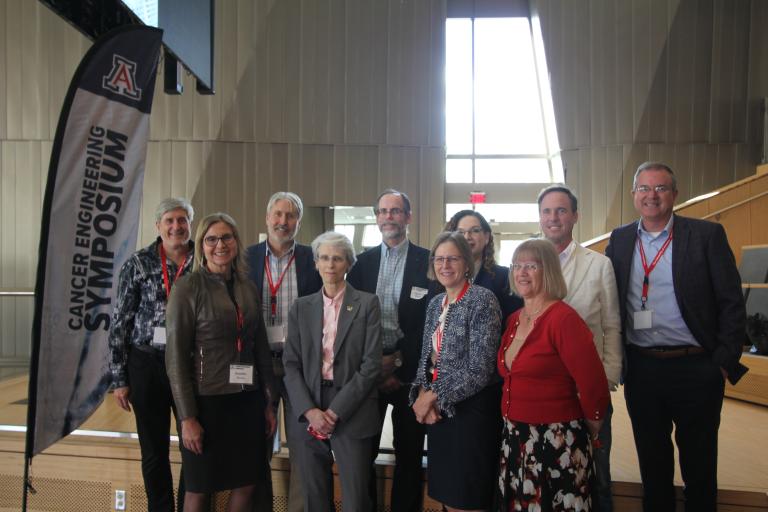
Adding an Engineering Perspective
Hahn and Sawyer began the University of Florida’s cancer engineering efforts in 2014. Sawyer, who was battling stage 4 metastatic cancer at the time, embarked on two journeys – one toward healing and another to use his engineering expertise for finding better ways to fight cancer.
Today, Sawyer is healthy, and his career is wholly focused on cancer engineering.
“I believe in this process. I believe in engineering. Now we’re going to go after it, and I’d love to be a part of that with all of you,” he said.
What Sawyer and other engineers bring to cancer research is the ability to 3D print tissue models and growth environments that allow for the study of cancer initiation, growth, metastasis and response to therapies. These 3D research materials better mimic the complex conditions of the human body than standard mediums.
“One day we decided we were going to stop feeling bad about not being biologists and start thinking about cancer like engineers would,” he said. “We go into things with a belief that we can make anything work. It’s the arrogance of engineers.”
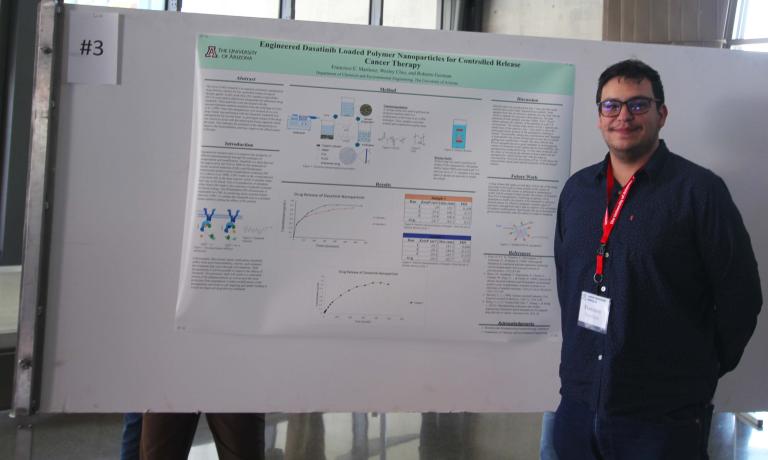
Sawyer’s speech inspired Francisco Martinez, a student pursuing a master’s degree in chemical engineering who is interested in working in the medical field.
Interdisciplinary at Its Core
“As a chemical engineer, you feel that maybe there isn’t a place for you because you don’t have that background in biology. But we’re totally capable of transitioning to that field with the skills gained as engineers,” he said. “It gave me confidence seeing Greg’s success.”
Martinez was among several graduate students presenting research posters at the symposium. He is working with UA professor Roberto Guzman on cancer drug delivery carriers. Martinez’s goal is to make cancer drugs more effective and efficient by increasing their targeting capabilities and bioavailability.
The Cancer Engineering Initiative will engage students at all levels in novel forms of interdisciplinary research. Relying on the expertise of faculty across the university and other researchers who will be recruited thanks to initiative funding, the effort is a big and bold one, said Hahn and Sweasy.
“The symposium was an incredible success and a good indication of where we’re headed with this collaboration. I have no doubt that biologists and engineers will make a critical difference in the prevention and treatment of cancer,” Sweasy said. “And I think this is a model for how we’ll see science tackling the greatest problems we face. It gives reason for incredible hope about what can be accomplished when we work together.”


